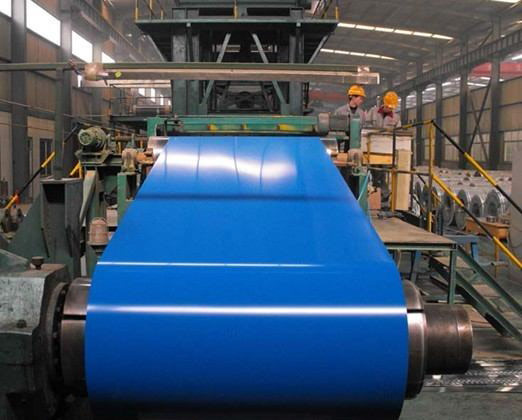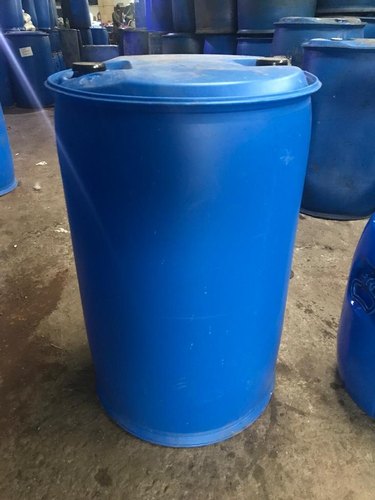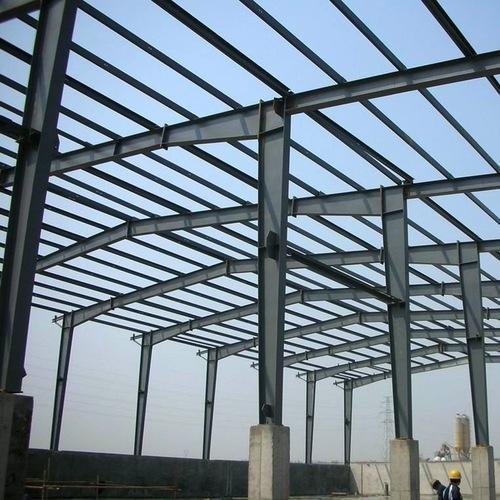Kolkata, West Bengal
Galvanized Coating Chemicals
Galvanizing is a process of imparting a sacrificial zinc coating on the iron or steel surface, thereby protecting the surface from atmosphere. Method of application differs according to the need and availability of measures.
The most popular galvanizing method is Hot Dip Galvanizing which is adaptable to almost all types of fabricated and non fabricated items. Flux type Continuous Galvanizing Line is such a kind where iron or steel strips are degreased, pickled and fluxed for surface preparation before dipping into the molten zinc.
Major Steps :
ALKALINE CLEANING - Removing oil, grease and soil from steel surface is crucial, otherwise dissolution of iron oxide / scale by pickling will be retarded.
ACID PICKLING - Ferrous metals have a surface coating of metallic oxide and / or scale which must be removed before zinc coating can be applied successfully. Pickling involves immersing the work in an acid to dissolve the scale or oxide film.
FLUXING - Liquid flux is recommended for continuous galvanizing line (C.G.L). It is used directly without any dilution. It has the ability to keep the sheets free from oxides by removing the rust blush prior to dip in the zinc bath. It also improves the zinc – iron adhesion in the galvanizing process.
PASSIVATION - Chromate conversion coating chemical is applied on galvanized iron and zinc –aluminum surfaces. It imparts excellent corrosion resistive coating that protects the underlying surface from weathering.
In case of nonox lines no fluxing is required. Further, depending on the sheet condition, acid pickling stage may also be omitted.
MOQ : 100 Kilogram
| Business Type | Manufacturer, Exporter, Supplier |
| Country of Origin | India |
| Grade Standard | Technical Grade |
| Physical State | Liquid |
| Usage | Industrial |
| PH Value | 8 To 10 |
| Purity | 99% |
| MOQ for Outside India | 1 Ton |
| MOQ for Domestic | 100 Kg |
Preferred Buyer From
| Location | Worldwide |
Alkaline cleaning removes organic soils such as rust preventative oils and lubricants. Multi-metal cleaners reduce or eliminate etch on all non-ferrous metals such as galvanized, galvalume and aluminum surfaces.
In addition, cleaners are specially designed to reduce foaming and provide maximum cleaning effectiveness.
MOQ : 100 Kilogram
| Business Type | Manufacturer, Exporter, Supplier |
| Purity | 99% |
| Form | Liquid |
| Packaging Size | 50 & 210 kgs |
| Application | Industrial |
| Melting Point | >235°C (dec.) |
| Molecular Weight | 450.47 |
| MOQ for Outside India | 1 Ton |
| MOQ for Domestic | 100 Kg |
Preferred Buyer From
| Location | Worldwide |
CGL & ITS MAJOR STEPS
Galvanizing is a process of imparting a sacrificial zinc coating on the iron or steel surface, thereby protecting the surface from atmosphere. Method of application differs according to the need and availability of measures.
The most popular galvanizing method is Hot Dip Galvanizing which is adaptable to almost all types of fabricated and non fabricated items. Flux type Continuous Galvanizing Line is such a kind where iron or steel strips are degreased, pickled and fluxed for surface preparation before dipping into the molten zinc.
Major Steps :
ALKALINE CLEANING - Removing oil, grease and soil from steel surface is crucial, otherwise dissolution of iron oxide / scale by pickling will be retarded.
ACID PICKLING - Ferrous metals have a surface coating of metallic oxide and / or scale which must be removed before zinc coating can be applied successfully. Pickling involves immersing the work in an acid to dissolve the scale or oxide film.
FLUXING - Liquid flux is recommended for continuous galvanizing line (C.G.L). It is used directly without any dilution. It has the ability to keep the sheets free from oxides by removing the rust blush prior to dip in the zinc bath. It also improves the zinc – iron adhesion in the galvanizing process.
PASSIVATION - Chromate conversion coating chemical is applied on galvanized iron and zinc –aluminum surfaces. It imparts excellent corrosion resistive coating that protects the underlying surface from weathering.
In case of nonox lines no fluxing is required. Further, depending on the sheet condition, acid pickling stage may also be omitted.
MOQ : 100 Kilogram
| Business Type | Manufacturer, Exporter, Supplier |
| Country of Origin | India |
| Type | Pure |
| Application | Industrial |
| Purity | 100% |
| Form | Liquid |
| Shelf Life | 12 Months |
| MOQ for Outside India | 1 Ton |
| MOQ for Domestic | 100 Kg |
Preferred Buyer From
| Location | Worldwide |
Conversion coating enhances the corrosion resistance property on the pretreated galvanized, galvalume and aluminum surface. It also helps inhibit the under paint corrosion creeping process that in turn increases the object life.
Conversion coating reinforces the bond between the paint film and the surface.
Since it is a single treatment process and does not require post rinse, it avoids additional effluent treatment and reduces the expenses for running the process.
MOQ : 100 Kilogram
| Business Type | Manufacturer, Exporter, Supplier |
| Country of Origin | India |
| Application | Industrial |
| Grade | Superior |
| State | Liquid |
| Purity | 100% |
| Shelf Life | 1 Year |
| MOQ for Outside India | 1 Ton |
| MOQ for Domestic | 100 Kg |
Preferred Buyer From
| Location | Worldwide |
INTRODUCTION :
The importance of protecting from corrosion articles used in open environment made of plain steel, such as structures and tubes etc., is obvious, and coating the steel surface with a thin layer of a corrosion resistant metal is a most convenient means of protection, best applied as a final operation in the manufacture of these products. Of all the metals used for the purpose of protection against corrosion, zinc is one of the cheapest and the one most widely used, being suitable for nearly every kind of article, except food containers. Use of zinc is not only cheaper and easy to coat but it also protects iron or steel by providing cathodic or sacrificial protection.
SURFACE PREPARATION CHEMICALS :
Mainly steel tubes / structures are galvanized in this method.
ALKALINE DEGREASING :
Degreasing – Removing oil, grease and dirt from steel is crucial to good galvanizing. Without this process acid pickling will be disturbed and a patchy zinc coating will form after galvanizing.
1. Conventional Alkaline Degreasing Method - Phosclean 101 – It is a strong alkaline cleaner for degreasing of iron and steel strips by dipping method, with proven effectiveness in degreasing and removal of dirt and smuts prior to hot dip galvanizing.
ACID DEGREASING :
Acid Degreasing Method – Phosclean 151 – It is an acidic degreasing chemical used to remove oil, grease, soils etc from ferrous metals prior to pickling/ derusting in structures and pipes Galvanizing line.
2. Acid cleaning is a process in which an acidic medium, in combination with a unique blend of non ionic and cationic surfactant for better wetting and surface tension effect, is employed to remove light oxides, shop soils, oil, grease and other contaminants from the work. The advantage of acid degreasing over conventional degreasing is that it does not require high temperature and rinsing process. It can directly be subjected to acid pickling. Hence, it is a energy saving and eco-friendly product.
DESCALING / ACID PICKLING :
Ferrous metals have a surface coating of metallic oxide or scale which must be removed before the zinc coating can be applied successfully. The most common process for removing this film is called pickling. Pickling involves immersing the work in an acid to dissolve the scale or oxide film. Many acids can be used; the most common for galvanizers is hydrochloric acid.
1. Ferroguard 358 (Acid inhibitor) – It is a powerful acid inhibitor in hydrochloric acid, when used in acid baths minimizes metal loss and forms a foam blanket on the surface of the pickling baths and thus minimizes fuming.
FLUXING CHEMICALS :
A property of the preflux bath is that it makes a thin coating on metal surface which prevent further rusting and at the time of galvanizing it removes the oxide layer from the surface and confirms the zinc metal adhesion.
1. Fluxol 340 – It is a powerful wet flux, in powder form and applied by making a solution by dip prior to galvanizing.
TOP FLUX / BLANKET FLUX :
Galvanizing or molten zinc bath needs some flux which removes excess zinc from the galvanized surface, it reduces heat radiation to some extent as well.
1. Fluxol 337 (Top flux) – It is a powdered product used as such over molten zinc bath, to provide a flux cover on top of the galvanizing bath which is less fumes and eco-friendly.
PASSIVATING CHEMICALS :
Zinc is also a sensitive metal which forms white rust on exposure to air and moisture. The corrosion products give an unsightly, mottled surface consisting of the loose powder that makes it unfit for the industrial and domestic uses. White rust damages long-term protection of the base steel. Passivation of the galvanized surface is inevitable for long life of the articles.
1. Alibond 292 – It is a hexavalent chromium based chemical process, which produces a protective colourless chromate conversion coating on galvanized iron. The coating protects the surface from corrosion and finger staining and renders a gloss to the surface. It can be used by dip or spray.
2. Alibond 304 – Due to the hazardous nature of hexavalent chromium industries prefer trivalent chromium based products. It is a trivalent chromium based chemical process, which produces a protective almost colourless to very light bluish chromate passivating film on galvanized iron. It can be used by dip or spray in galvanizing plants and specially recommended for continuous strip lines.
3. Zipac 305 (Non chrome) – It is a unique eco friendly product free from chromium. It is a water soluble conversion cum passivating chemical, ideally suitable for zinc coated metal surfaces. The chemical forms a thin film over the zinc coated steel (G.I.), which forms a protective non-chrome layer to improve the corrosion resistance properties of the treated metal. ZIPAC 305 may also be used effectively for aluminium –zinc coated strips. The toxicity profile of chromium and pollution effect of chromates can be eliminated by using the new generation product in coil lines.





